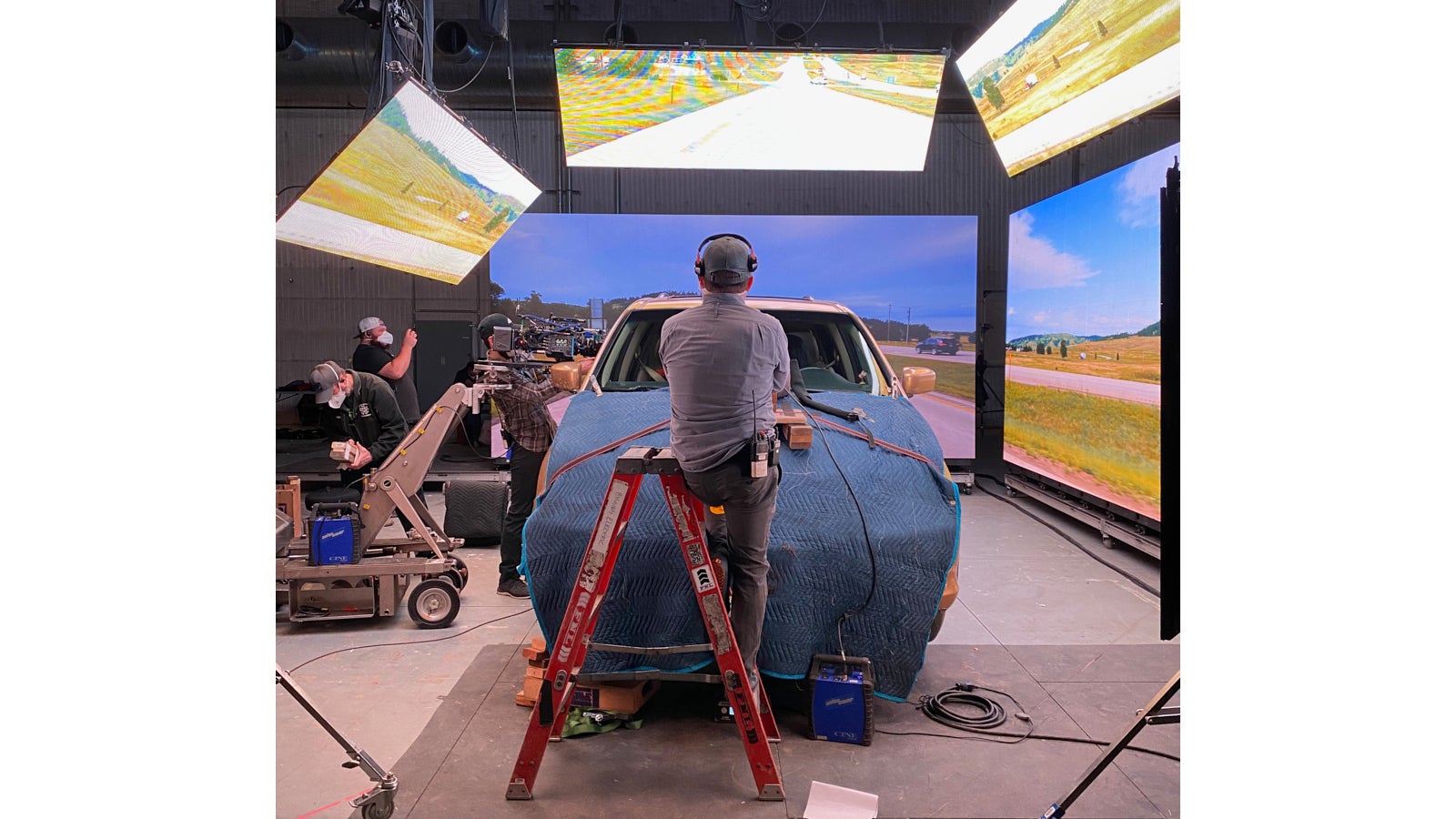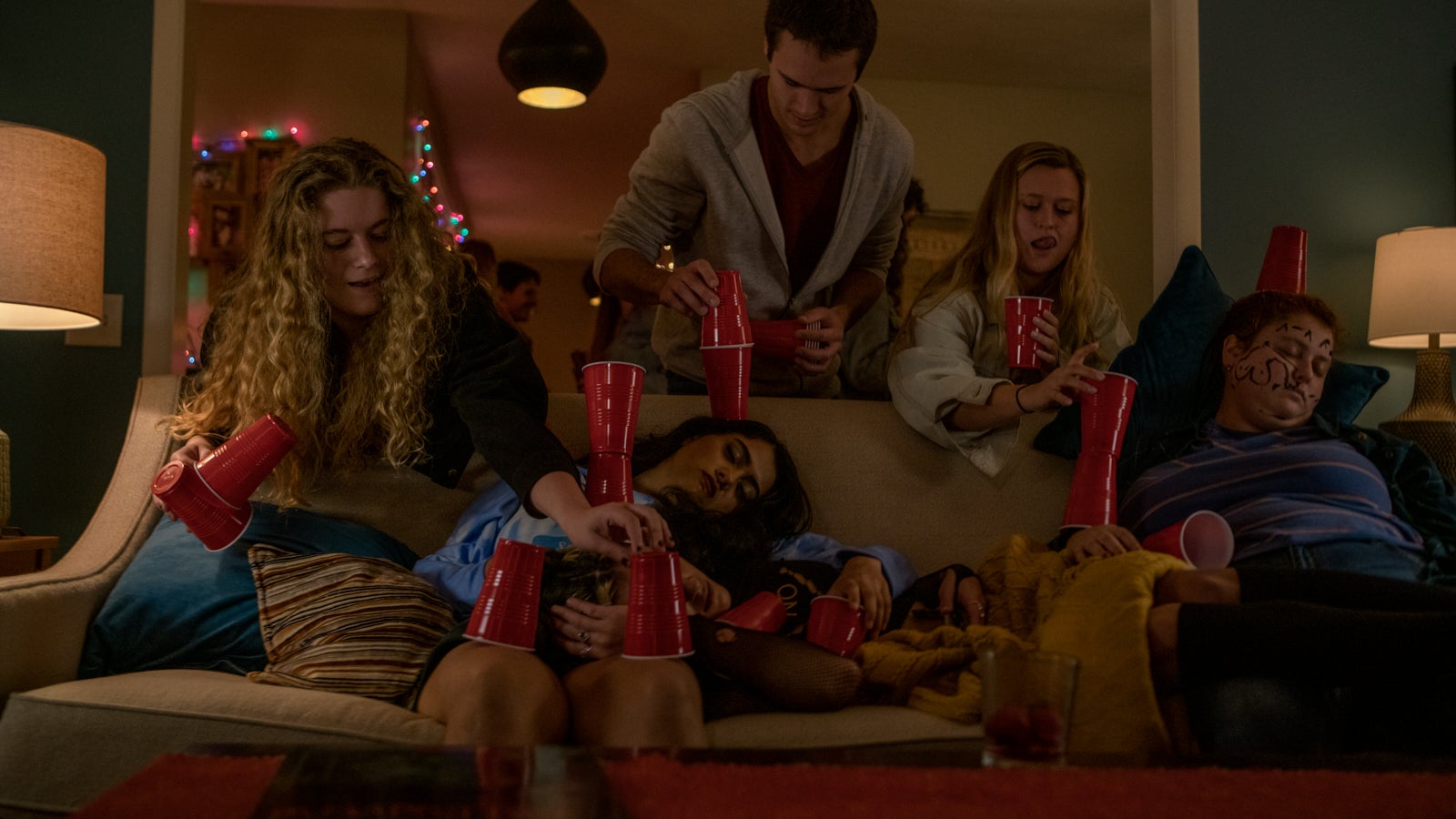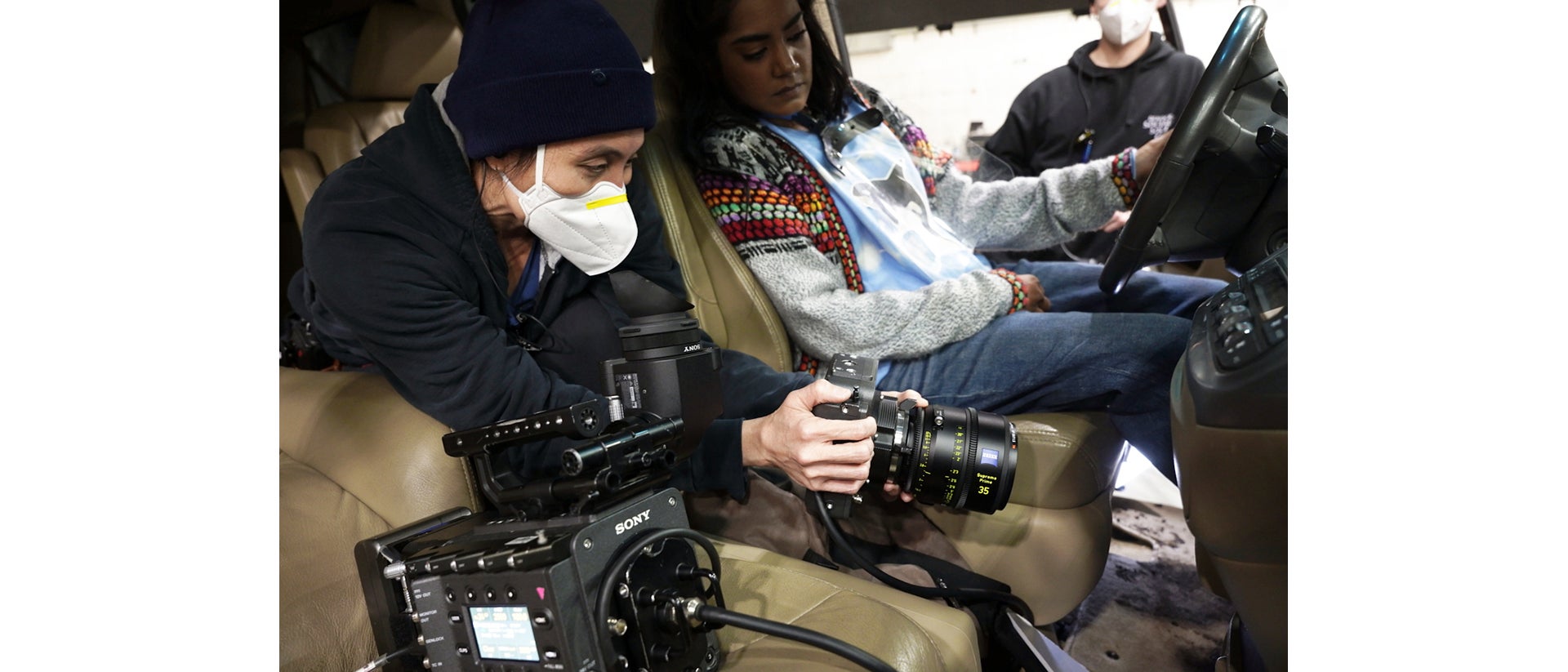
07-28-2021 - Case Study, Gear, Technology
What Does 'Plan B' Look Like? Cinematographer Sandra Valde-Hansen Shares Her Vision - Shot on VENICE
By: Suzanne Lezotte
Back in 2020, prior to the shutdown of Hollywood due to the pandemic, Sandra Valde-Hansen was in pre-production on a teen comedy, “Plan B,” with director Natalie Morales attached. “We were supposed to start shooting on March 16 in Syracuse, NY, but we were shut down because of Covid. In July, I got word from the producers they were pitching a plan to Hulu/Disney that would allow them to shoot during the pandemic, with protocols in place.”
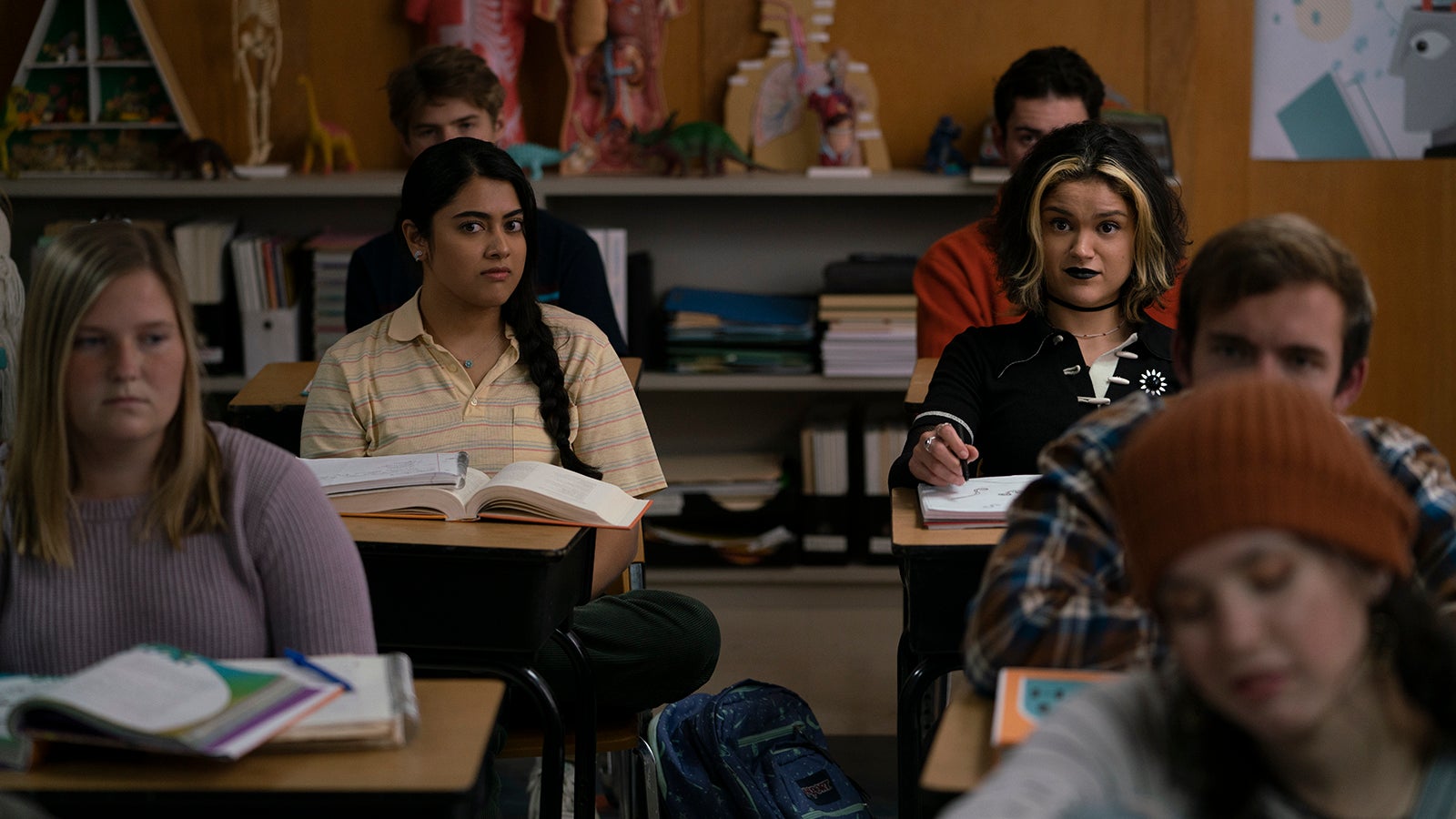
Plan B stars Kuhoo Verma and Victoria Moroles
American High Production Company, which is based in Syracuse, has a multi-picture deal with Hulu, and specializes in teen drama/comedy. Jeremy Garelick, founder of American High, theorized that since teen pictures always need a high school for scenes, buying one would be the perfect solution. “They even bought school busses,” said Valde-Hansen. American High turned the vacant high school into production offices and utilized different areas for high school scenes, reserving one floor as a hospital floor. “They are churning these films out because they have the locations and don’t have to worry about availability,” she said. Valde-Hansen’s mission has always been to make movies that people watch, and believes that comedy especially resonates with people. “I don’t necessarily want to shoot potty-humor, I want it to have a message. That’s why I wanted to do this film with Natalie. Given that she is Cuban-American, there aren’t many comedies with people of color that teens can watch. That resonated with me.” With an Indian/American writing team, Joshua Levy and Prathiksha Srinivasan, Morales came in and finessed the script. “Women of color can be smart, they can be funny, and they can be raunchy,” explained Valde-Hansen. “We are under-represented women and minorities, and Natalie can find the comedy that is appropriate. I really liked that about her. Hopefully, this means there will be comedies that people won’t have to point out that it’s a female-driven comedy.”
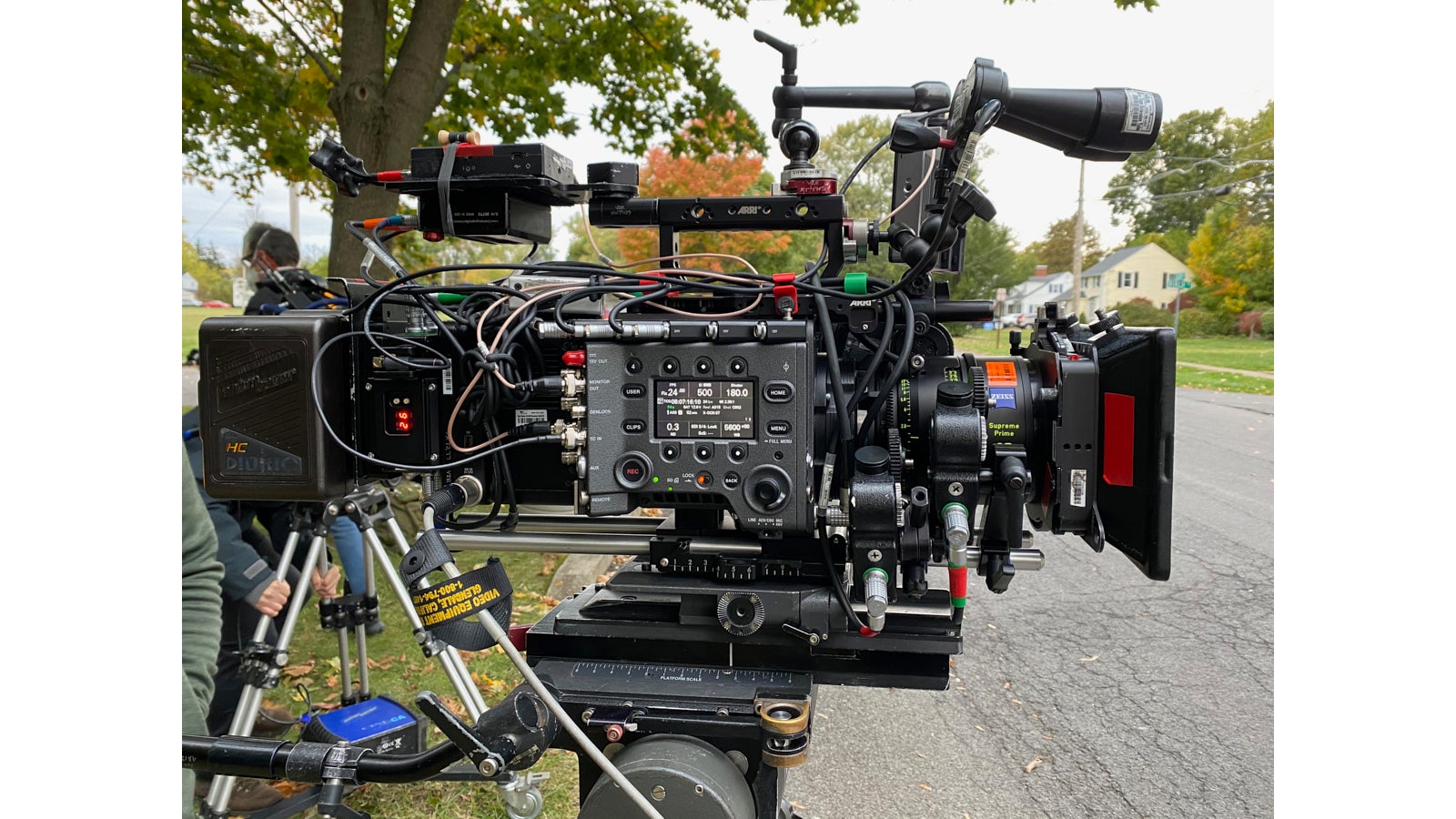
The premise of the film involves two teenage girls, best friends, who break out of their shell one weekend. Sunny, who is Indian, is being raised by a single mom who is very demanding, and her friend Lupe, who is Latina, feels unseen by her parents. “When we started this movie back in 2020, the original script concentrated more on the parent-child relationship, for both Sunny and Lupe,” Valde-Hansen explained. The original script called for an Asian-American character, and it was supposed to happen in the wintertime, “so we had a whole different trajectory for the look,” said Valde-Hansen. The production company is committed to inclusion, “finding diverse people, in terms of directors and writers.”
When it came to camera choice, Valde-Hansen explained the journey to choosing the Sony VENICE. As an AFI instructor who works closely with Stephen Lighthill, ASC, chair of the cinematography department, she noticed students were raving about the camera. Valde-Hansen had a chance to test the camera when she worked on a show for Starz called “Now Apocalypse,” “and I was thoroughly impressed.” Although she didn’t end up using it on the show, “I had all these tests, so when I started ‘Plan B,’ I was able to revisit it. Budget-wise and look-wise, VENICE was the right choice. It’s just such a wonderful camera.” Renting from VER, Valde-Hansen paired the camera with Zeiss Supreme Prime lenses. “I love the large format coverage and the uniformity of lenses for the assistants was fantastic. And, of course, the look of the Supremes is just gorgeous.”
Valde-Hansen was a bit nervous about shooting at ISO 2500 even though her colorist, Nicholas Hasson with Light Iron had shown her footage from a show he was working on, shot at 2500. “It was so clean. I called him a few days into the shoot and told him I was shooting 2500 all the time and asked if that was okay. He responded, ‘Sandra, every DP shooting the Sony VENICE is shooting 2500. You are fine.’” Valde-Hansen went on to shoot most of the show at 2500. “I did daytime exteriors at ISO 500, sometimes at 2500 if it was overcast. All my interiors were 2500 regardless of day or night. I did some quick tests that I based at 500 and shot at 800, then shot at 1600, with a base of 500. From testing, I learned that you should not stray from the base ISOs of 2500 and 500 if you want a clean image. I did some tests changing the ISO to 800 and 1600. I found the 800 and 1600 were noisier than the base ISOs, which was not what I was looking for in this film. I shot tests with my camera operator in a dark room, with only a cell phone on his face, and the 2500 was beautiful. Having the dual ISO was a real game-changer.”
Together with Hasson, “we created a few LUTs, and then the show shut down. Because he had all of my footage from before, I only had to send him some new notes. Working remotely, he sent me three LUTs: a base LUT, a desaturated LUT, and a saturated version of that LUT. I mainly used the base and desaturated LUTs.”
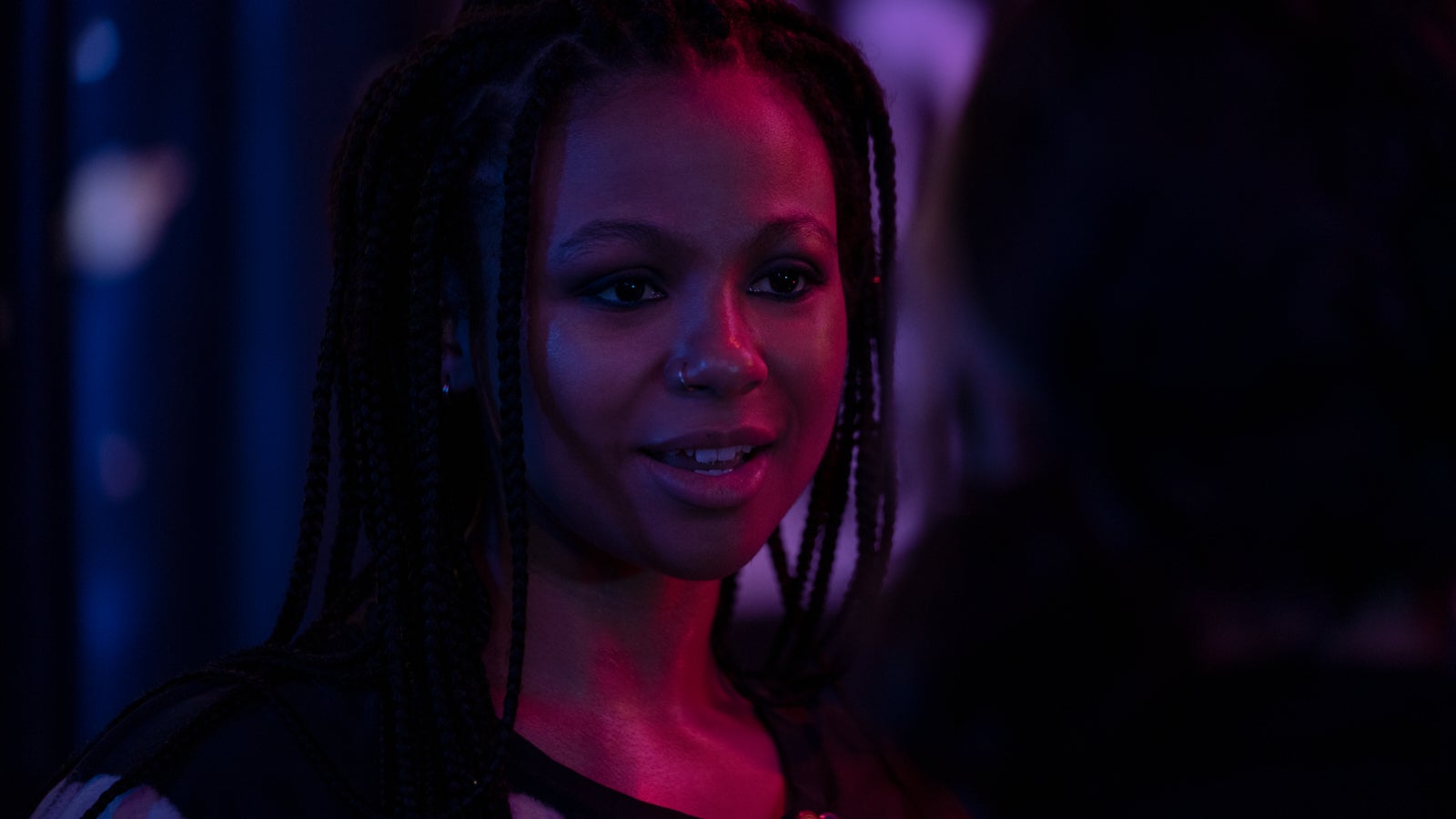
When Valde-Hansen set out to create an overall look, she took into account the premise of two teen girls who are feeling trapped, and the road trip ultimately changes how they see themselves. “We wanted it to feel a bit de-saturated; we were shooting during the fall in upstate NY and we didn’t want to lose the colors. For any day interiors, I wanted it to feel soft and on the cooler side.” When the girls throw a party at Sunny’s house while her mom is out of town, “we started to bring in a little color, using Christmas lights,” she explained. Then the girls leave on their road trip “and we wanted it to feel warmer, so whenever we could, we incorporated the sun. Every single scene has some sort of color trajectory, and together with my gaffer, Dessi Coale, and key grip, Kash Costner, we discussed how that would happen. Our intention was to have a bit of yellowish-green at the truck stop, and then the bowling alley has magentas, purples, blues and orange. The playground scene was always a mix of cyan and sodium vapors, which are wonderful complements. We wanted the diner scene to feel warm inside, but cooler outside, and when we get to the rundown party house we wanted it to feel creepy and foreboding. We went with greens and ambers on the inside and a little bit on the outside. Then it carries over to the exterior. When the girls finally get through their adventure, literally the sun comes out. We brought in hits of sunlight into the room when Lupe sees her dad and Sunny has the heart to heart talk with her mom.”
Valde-Hansen did a presentation for Morales in order to get her buy-in for the VENICE full format. “She loved the idea. Large format gives you a little more natural perspective, and intimacy is a little bit more believable. It feels more real and cinematic,” she explained. Valde-Hansen loved that “the color science of the camera is incredible. Even if you shot with this camera and didn’t have a colorist or DIT, the rec.709 alone is worth it. The color science is very natural.”
Utilizing the internal NDs on the VENICE helped Valde-Hansen make creative choices on-set quickly. “If I wanted to change depth of field, shooting at 2500 was such a clean image that it allowed me to light with the NDs and pull them in and out. In upstate NY, the weather changes by the minute, so being able to change a filter with the press of a button saved me. On this show, I didn’t have a DIT on set, I had a data management person, which meant I had no camera control, but I had iris control. Having lens/camera data on my screen, I could really dial it in.”
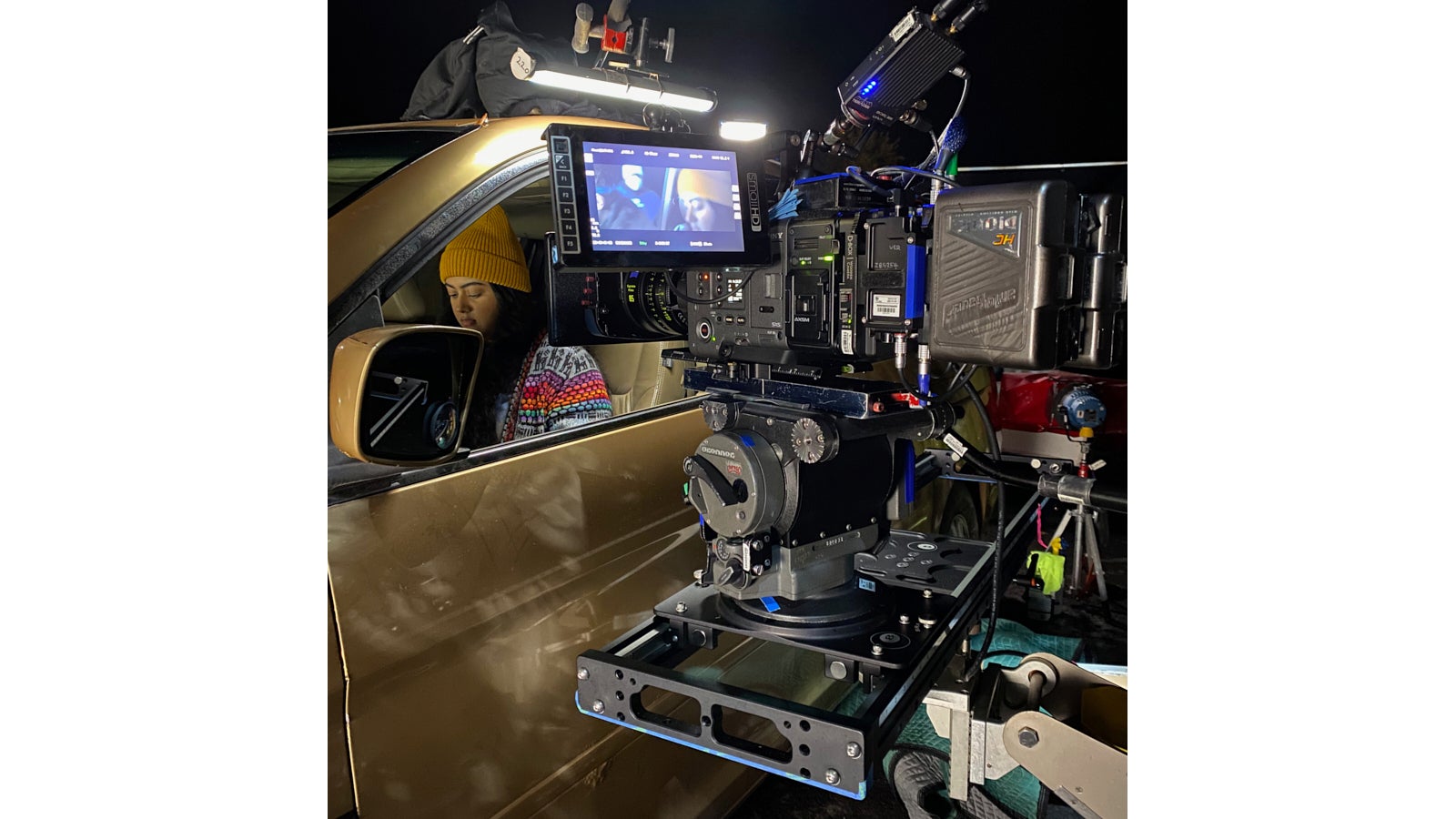
In the film, the bowling alley was the turning point of the girls’ adventure. “Everything is happening. Lupe is connecting with a love interest and coming to terms with her identity, so we wanted color to explode.” The scene was shot on two separate nights, and as luck would have it, a torrential downpour happened the night they were set to shoot. “We had a very tight schedule and the producer suggested we put the car in the catering tent. It turned out to be an excellent makeshift studio.” Morales wanted the scene to convey two people connecting, but given that it was a sex scene, “she didn’t want to be gratuitous about that scene. It’s a teen comedy with a bit of raunchiness, but you don’t see any female nudity.”
Another night scene takes place in a parking lot as the two girls have a conversation after their van is stolen. “We had a Condor on one side, and on the other, we had a soft sodium vapor push through diffusion, with a little fill. I had a whole reference board, and people remarked that it was a lot darker than they thought it would be, given that this was a comedy.” Valde-Hansen and Morales wanted it to feel naturally dark. “We didn’t want to lose faces, or the physicality of it, but the whole thing doesn’t have to be consistently bright in order to see the comedy.” She remarked that Morales was one of the first people in the color session who said to make it darker. “I always light with a thick negative, then build a LUT that makes the image darker. I remember getting notes asking if we really wanted to make it darker. Kudos to Natalie for keeping it natural and stylistic. I loved working with her.”
Given that the two main characters had different skin tones and textures, Valde-Hansen felt “the camera’s color rendition is very natural. At one point, I noticed my colors (pinks and magentas) were not rendering the way I saw them. I realized it was my LUT, so when I switched to a rec.709, the color renditions were perfect. We had dark to medium to light skin tones and without a lot of effort, I could be true to the skin tone.”
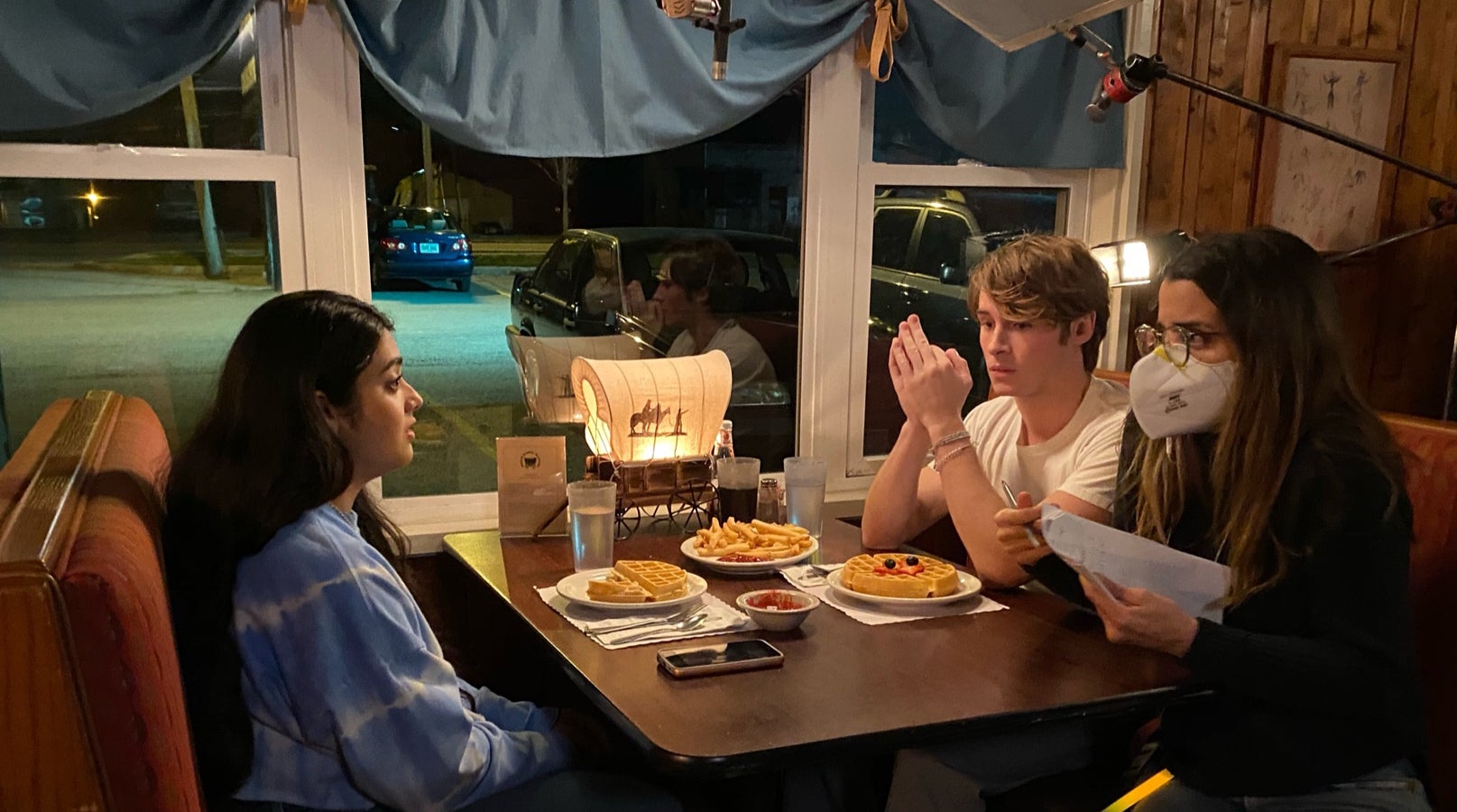
Director Natalie Morales at right in mask
One scene that she found particularly difficult was the party at Doug’s house where the girls find their stolen van. Valde-Hansen said the whole sequence was one of her favorite, but “it was tough. We shot over a week’s worth of work in an abandoned house in the middle of nowhere.” It was rainy and cold, with a lot of mud. “My operators were amazing, trudging through that mud with a Sony VENICE. I was so concerned they would fall because they were carrying such a heavy load, but they never did.” Because they were in such a rural area, they had to bring everything. “We were out in the elements. There was no light. We had to build it all ourselves. My gaffer and her team did such an incredible job keeping it as real as possible, and creepy. It was a tough week, but everyone was stellar. It was a tribute to the Sony VENICE, to shoot at such a high ISO and get a clean image. If we had any other camera, we would have had to double and triple lights.”
Given the ground was too unstable with the inclement weather, the crew could only use scissor lifts, not Condors. To make it more difficult, the ‘mud monster,’ a boy who runs after them, “had to fall in the mud and it was cold. Every time we did a take, we ran him into a warming tent.” Because of Covid, the crew had an entire medical staff on site to keep an eye on him. With a singular light trained on his face, Valde-Hansen used car light practicals, with one Quasar tube mounted above the car.
Valde-Hansen utilized the Rialto for two shots in the movie: a shot of the keys in the car and the foot pedal. “We couldn’t get a shot of the foot pedal because the camera was too big, so we recreated in on stage and we were able to get it. The Rialto is a really great tool for small spaces.”
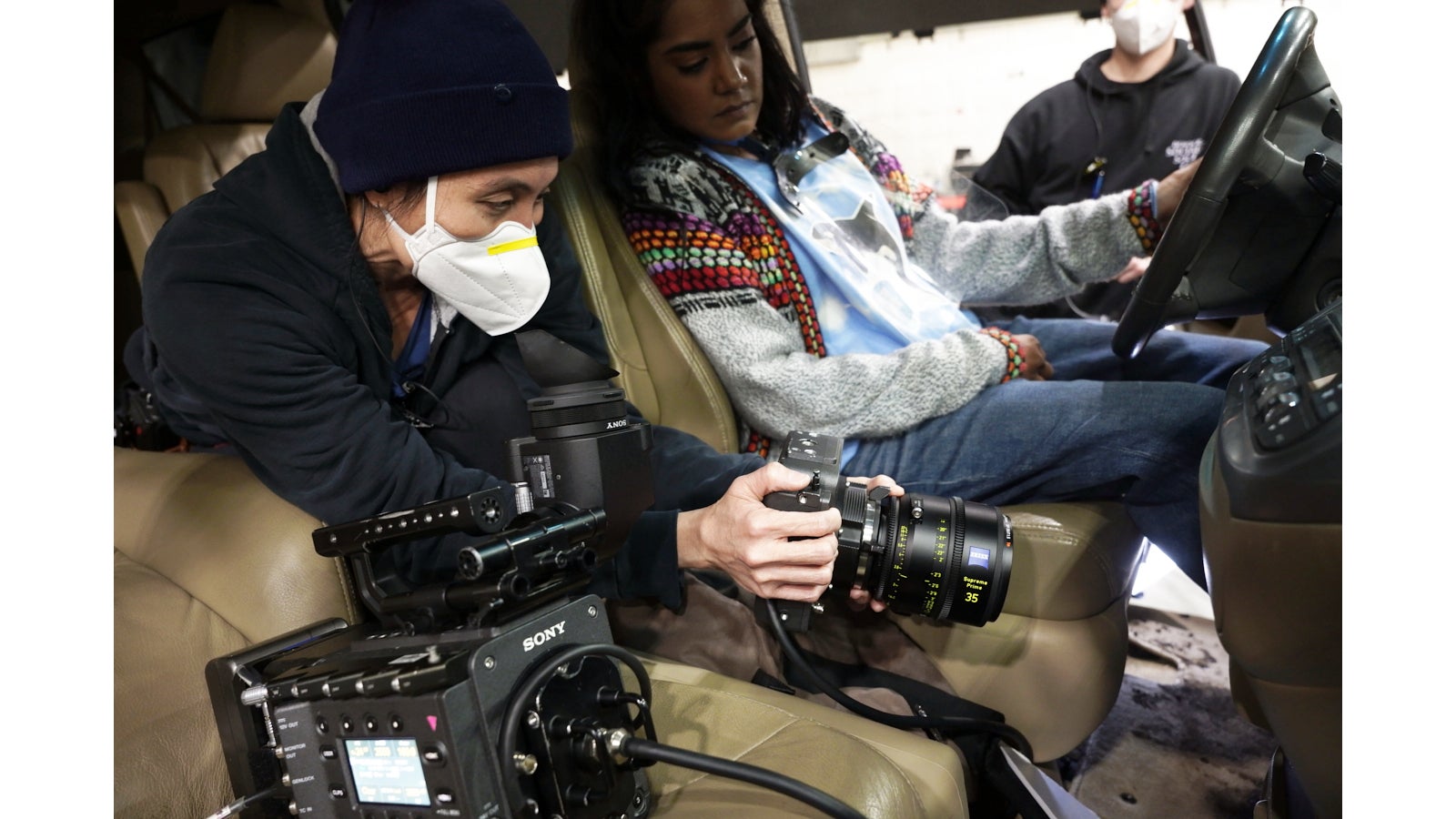
DP Valde-Hansen using the Rialto extension system
The color grade was a quick turnaround, and both worked remotely, Valde-Hansen using a calibrated monitor at home. “Nick said to me that consistency made his job really easy, and I attribute that to the camera and my gaffer,” she said.
Valde-Hansen is passionate about her work not only as a cinematographer but as a mentor and teacher at AFI. As a graduate of Florida State University, she spent years as an AC learning the business before she began shooting. Inspired by Spielberg’s films, and then specifically by the lighting on “Empire of the Sun,” Valde-Hansen eventually met cinematographer Allen Daviau, ASC, and was able to tell him how his work inspired her. But the real breakthrough in her career she credits with working for director Greg Araki, who was at the forefront of queer cinema and a Sundance darling. “He was looking for a new DP for a low-budget feature called ‘Kaboom.’ I had seen a film of his in London and I was blown away.” Since then, she shot two movies, a TV show and a few commercials for him. “That’s what put me on the map, and I would work with him forever.”
Valde-Hansen admits that the business is tough, “but if you love it, you have to just keep at it. At AFI, I look for absolute passion but also a well-rounded person. Directors are looking for someone who understands story, someone who can personally relate.” As for work/life balance, which she gets asked about often, her advice is, “if you want a family, just do it and you’ll figure it out. It goes back to the passion: if you are passionate about becoming a cinematographer, then it will work out.”
